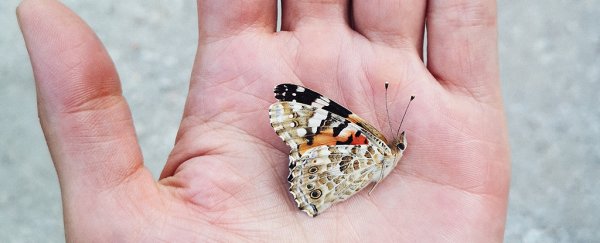News of an insect apocalypse has become a familiar headline in recent years, with study after study pointing to an alarming loss in invertebrate numbers. As consistent as the message seems, the results don't always agree with one another.
A new study led by ecologists from the German Centre for Integrative Biodiversity Research suggests the decline in global populations might not be as steep as we thought, and could actually be improving in some areas.
That conclusion might appear to be in stark contrast to claims we heard last year that 40 percent of all insect species face extinction, with some claiming an annual decline of 2.5 percent in their numbers worldwide, or even higher in some corners of the globe.
But taken in context, the new study builds a picture that shows how important it is to protect our environment and pay close attention to this vital part of the biosphere.
By compiling more than 160 surveys monitoring the weight of insect and arachnid populations around the globe, the researchers were able to get a good sense of the biomass and distributions of creepy crawlies dating as far back as 1925.
Their figures suggest there's a marked difference in trends for invertebrates in different ecosystems in different parts of the world.
For those that live on land – which is most insects and spiders – the news still isn't terrific, with an estimated yearly drop of just under one percent.
Seeing nearly one tenth of the invertebrate biomass shrink away every decade isn't exactly cause to celebrate, but it's a slope that we could optimistically interpret as giving us more time to act.
Oddly, other results in the study do provide us with a ray of hope. Insects that live in aquatic environments might have had a bit of a hey-day over the past century, growing by a similar amount year by year.
With so many numbers hinting at such different scenarios, it's easy to feel confused. Are things terrible? Just bad? Or is the science simply unsettled?
Manu Saunders is an ecologist from the University of New England with plenty of experience in interpreting data on insects. While she was not involved in this study, her advice is to not miss the wood for the trees.
"The overall trend is not the important message here," Saunders explained to ScienceAlert.
"The key take-home for me is the variation in insect population trends across space and time, between species groups, and between types of habitats or climate zones. These trends can be more informative about where we can most effectively address conservation initiatives."
It's all well and good to be shocked by the numbers. But hidden inside the statistics are important details we'll need to understand if we're to make decisions on how to best focus our efforts.
The surveys used in the study were all at least a decade or two in length, and focussed largely on protected environments across more than 40 countries covering five continents.
The details revealed the decline was worst in North America. Even putting those numbers aside, a weak global drop was still evident, indicating there's plenty of reason for all of us to pay attention.
The reason behind the decline is also a topic still in need of more research. Bees have suffered greatly from pesticides, parasites, and potentially changes in climate, but the sheer diversity of insects means it's unlikely any one explanation will be sufficient for all.
Just why there is a rise in freshwater insects is a bit of surprising mystery, and could be evidence that ongoing efforts to improve water quality are succeeding.
As encouraging as it is to think governments can turn things around with adequate environmental protections, the sheer complexity of insect ecology means solutions will probably need to be diverse.
"This study is great because it really highlights how complex and varied insect population trends are," says Saunders.
"Although some people are again focusing on the simplified average trend mentioned in the abstract, the authors themselves take pains to note that there is more nuance here."
Given the study was light on data covering managed environments like crops, and included few sites from the Southern Hemisphere, there's plenty of room for further research to contribute to that nuanced description.
We're going to need all the information we can get, and with luck, the picture it all paints won't be a simple one, but one rich in ideas that can inform our decisions.
It shouldn't take threats of an insect apocalypse to motivate us into putting pressure on governments to protect such an important part of nature. Just solid data.
This research was published in Science.
